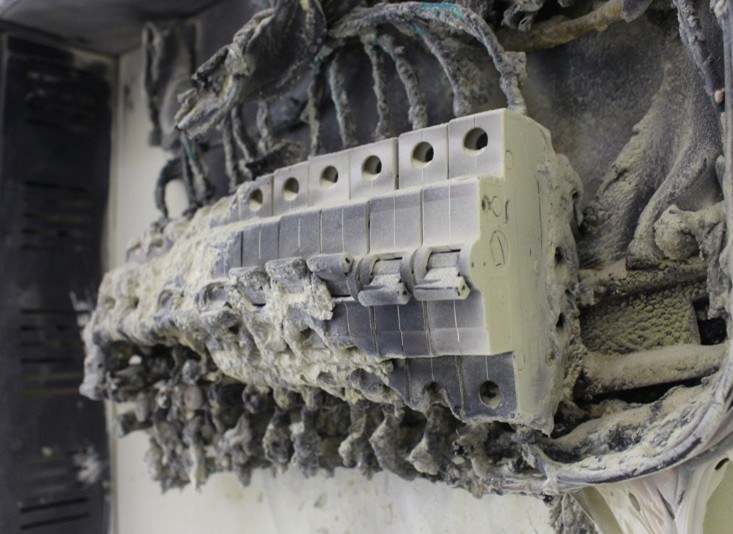How Do You Change a Breaker in a Breaker Box?
If you’ve landed on this article there’s a good chance that you’re running into some electrical issues and you’re wondering how to replace the breaker in your breaker box. Well, the short answer is to identify which breaker is at fault, turn off the power, and replace it with a compatible breaker before restoring the power.
I’m sure we can both agree that working with electricity can be quite dangerous. So, don’t pull out your screwdriver and head over to your electrical panel just yet! In this article, we'll explain how to safely replace a breaker and help you know when it's best to call a professional.
How Do You Know if a Breaker Is Damaged in a Breaker Box?
First off, it’s easy to recognize the signs that one of the breakers in your breaker box is damaged. If something causes the breaker to trip, you will find that some of the appliances in your home are left without power and your breaker’s toggle is in the middle position. Since breakers are designed to catch electrical faults and stop them dead in their tracks, this is an essential part of preventing electrical hazards and damage to your appliances.
How Do You Know if the Breaker in My Breaker Box Needs to Be Replaced?
One of the simplest ways to identify a troublesome breaker is by checking the toggle switch. Normally, it should stay firmly in the ON position. If it’s stuck in the middle or flips back to OFF when you try to reset it, the breaker may be permanently damaged. Switches can accumulate damage over time, so the switch may feel loose or not click into place like it should.
If certain areas of your home continue to lose power after resetting the breaker, think of a room’s lights starting to flicker or going dark altogether, it can be a sign that your breaker needs to be replaced. Inconsistent performance can be a clue that the breaker isn't delivering power properly, even if it hasn’t fully tripped.
Over time, breakers can weaken from age, wear, or repeated overloads, and may stop working reliably even if they look fine on the outside. If resetting the breaker doesn’t restore power, it could mean the breaker needs to be replaced or there’s a larger electrical issue at play.
You might also notice signs of damage around the breaker, such as discoloration, a burnt smell, or a breaker that feels warm to the touch. Heat and burning odors often point to overheating inside the panel, which can be caused by a loose connection, a worn-out breaker, or excessive current running through the circuit. Over time, this kind of heat damage can compromise the integrity of your breaker and cause it to become a fire hazard.

Keep in mind, breakers trip for a reason. If the same one keeps going out, it might point to overloaded circuits, bad wiring, or a faulty appliance. In those cases, it’s best to have a licensed electrician take a closer look before replacing anything.
What Supplies Do I Need to Fix My Breaker Box
So, if you've figured out that your breaker box has a broken breaker that needs to be replaced, make sure that you have the necessary supplies to make that replacement. As you can imagine, one of the most important steps will be to make sure that you have a new breaker of the same amperage rating so it will work correctly with the other parts of your electrical panel. You’ll want to have a screwdriver on hand, as well as a multimeter.
How To Replace the Breaker in Your Breaker Box
If you’re a licensed electrician getting ready to replace a breaker in your breaker box, the first thing you’ll want to do is make sure everything is safe. You’ll want to start by turning off the main power to the panel while you're working. It’s also a good idea to go into the room or area connected to the breaker and turn off all the light switches and unplug any appliances or electronics. Doing this helps avoid any sudden power draw that could stress the new breaker after installation.
Once you’re sure the power is off, remove the panel cover to get access to the breakers. Find the one you’re replacing and carefully pull it out. Most breakers just snap in and out, but take your time so you don’t damage anything nearby.
Now it’s time to install the new breaker. Start by connecting the circuit’s load wire to the terminal screw on the breaker. Make sure the connection is snug, but don’t overtighten. While you’re in the panel, it’s a good chance to check the other breakers and gently tighten any loose terminal screws you come across.
After everything is secure, put the panel cover back on and turn the main power back on. Flip the new breaker to the "on" position and then go check the room it controls. Plug in your appliances, turn on the lights, and make everything works like it should. If the breaker trips right away or nothing turns on, switch it off again and double-check your connections.
If you're replacing a breaker and need a reliable match, check out our selection of legacy circuit breakers! We carry a wide range of hard-to-find models that are perfect for older panels and trusted by electricians nationwide.
For any questions or to request a FREE quote, feel free to reach out at info@bigelectricsupply.com or give us a call at (317) 721-4702 today.